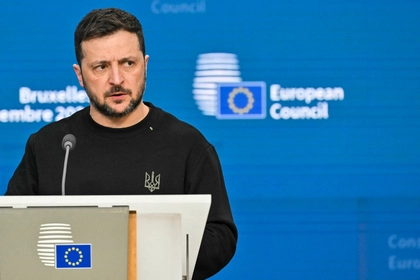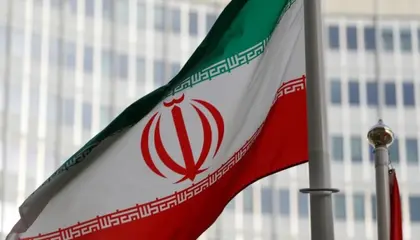On Monday Mar. 20, thousands of members of the Iranian diaspora are expected to gather in Brussels for a rally and march that will demonstrate continued solidarity with the ongoing protests inside Iran. Those in exile have been demanding a more assertive approach to Western policies towards the Iranian regime for some time. The event will not only coincide with the meeting of the European Union’s Foreign Affairs Council, but also comes just one day before Nowruz, the Iranian New Year.
As Iran embarks upon that New Year, there is a strong sense that the protests over the last year are bringing changes within the country that are permanent and quite literally revolutionary. The Iranian regime and its supporters would like to contend that the protests that began last September, following the death of Mahsa Amini at the hands of Tehran’s “morality police, are over.” In reality, after more than six months the uprising’s defining slogans are still being repeated, signaling an ongoing commitment to bringing down the regime in its entirety.
JOIN US ON TELEGRAM
Follow our coverage of the war on the @Kyivpost_official.
At the same time as that regime has been cracking down violently on the protests, its malign activities have also been reaching into the heart of Europe, with assassination plots and terrorist threats targeting expatriate dissidents and opposition news sources. Tehran has also been supporting Russia’s aggression against Ukraine by providing deadly drones that continue to hit civilian areas and infrastructure, such as power plants.

Zelensky Says Trump and EU Must Work Together to Secure Peace
Last Tuesday evening, the annual fire festival of Chahrshanbeh Suri became another outlet for protests against the mullahs, in spite of continuous threats from the authorities, the arrest of a number of youths and the placing of security forces on high alert. In Tehran and a number of other cities people, holding large gatherings around the bonfires that traditionally mark the occasion, chanted slogans against the regime’s Leader Khamenei.
Last month, protests flared up in several cities at the end of the traditional 40-day mourning period for two people whom the Iranian judiciary had executed for “spreading corruption on Earth” for their part in the uprising. There may be dozens of other detainees at imminent risk of execution but, the fact that there have so far been no further slayings, suggest that the regime fears further unrest.
No doubt, similar concerns drove Iranian state media to announce the release of 22,000 protesters from detention as part of an earlier, general offer of amnesty by Khamenei. If this is a true number of detainees, it is ironic that most international media had previously underestimated the extent of the regime’s crackdown.
The People’s Mojahedin Organization of Iran (PMOI/MEK), the country’s leading pro-democracy opposition group, has long reported that more than 30,000 activists and protesters were detained in the aftermath of Amini’s death. The MEK has also reported that over 750 people had been killed after being shot by security forces, beaten in the streets by the Basij militia, or taken into custody tortured, mostly by the Islamic Revolutionary Guard Corps (IRGC)
Tehran’s latest acknowledgement of mass arrests should prompt the international community to take the MEK’s reporting of the crackdown more seriously.
It is, after all, the MEK’s affiliated network of “Resistance Units” that have maintained continuous unrest, with the same focus, for six whole months. Since 2014, those Resistance Units have been promoting the slogans that have defined the protests, which include “death to the dictator,” and “down with the oppressor, whether the Shah or Khamenei.”
Western policymakers should be in no doubt that, such slogans, indicate that the ultimate aim of the uprising, is for regime change and the establishment of a democratic republic.
As well as being evident during the first weeks of the uprising, the ongoing condemnation by activists of the executions of Iranian citizens, 40 days after the fact along with cries of freedom at the celebration of Chahrshanbeh signals that the unrest will not stop any time soon. As Iranians celebrate Nowruz, which literally means “new day”, the desire for change will only strengthen.
Monday’s rally in Brussels will outline the concrete steps that the United States, Britain, the European Union, and others should take to support the Iranian people’s goal of democratic change.
The most basic first step is to simply recognize their rights to resist oppression, defend themselves against violent crackdowns, and pursue the expulsion of an illegitimate and non-representative regime. Once that has been done, it should be easier for all democratic governments to support commonsense courses of action that political considerations that have, thus far, been delayed.
For several weeks, there has been widespread speculation that Britain and the EU will designate the IRGC as a terrorist organization. While many agree such a label is appropriate, the Western political establishment other than in the U.S. remains afflicted by inertia in their dealings with the Iranian regime.
For four decades, it has generally been assumed the ruling system had a secure hold on power and that the consequences for alienating the clerical regime would be far-reaching; a stance that Iranian activists have characterized as appeasement. In reality, political situation in Tehran has never been as unwavering as depicted by the mullahs. It is now clear that, after six months of pro-democracy protests, the regime is currently profoundly vulnerable is undeniable. The era of that appeasement must come to an end in this new Iranian calendar year.
Designating the IRGC as a terrorist organization would go a long way toward demonstrating that shift in Western policy. And once that simple, common-sense measure has been adopted across Europe, it will be time for the EU, Britain, and the United States to begin systematically isolating the Iranian regime on the world stage. They should continue to do so in tandem with the mounting pressure from the Iranian people and the MEK affiliated Resistance Units, until the regime is overthrown by the Iranian people, ushering in a New Day of Iranian history and the dawn of freedom, democracy, and peace in the region.
The views expressed in this opinion article are the author’s and not necessarily those of Kyiv Post.
You can also highlight the text and press Ctrl + Enter







